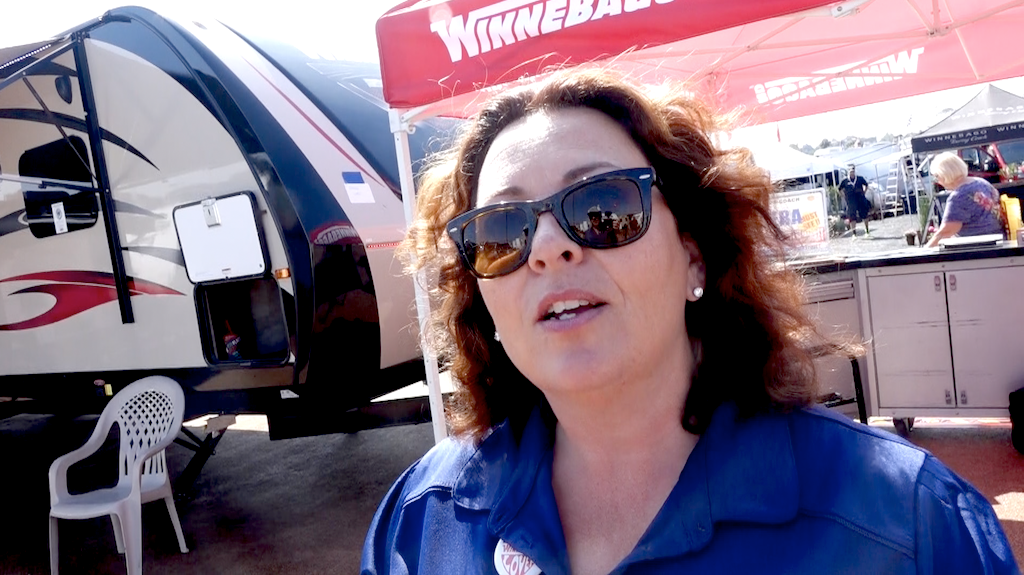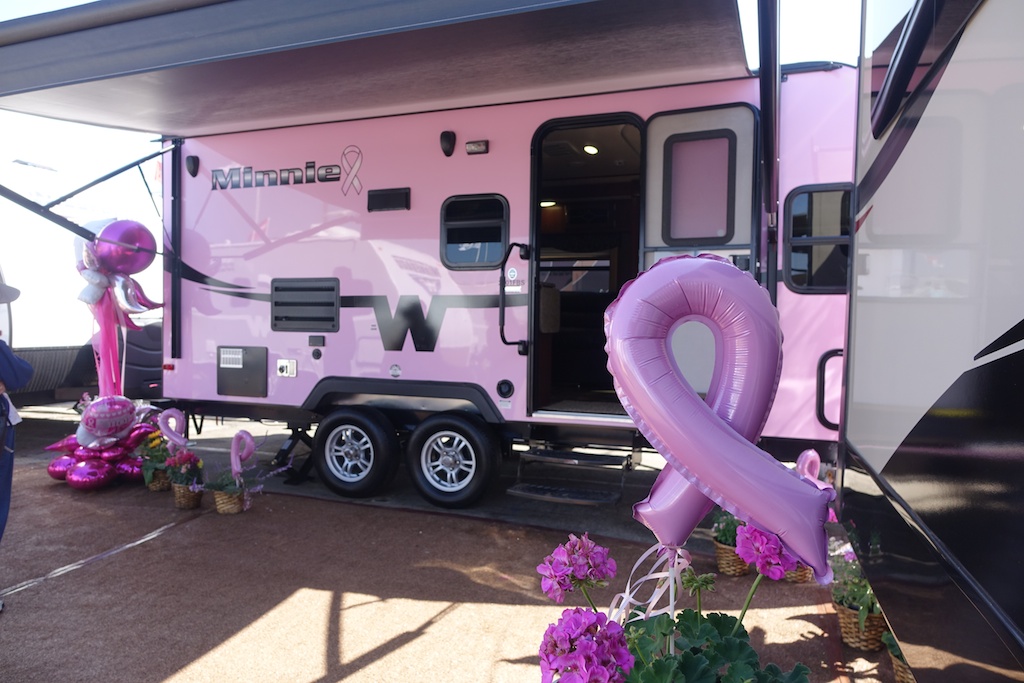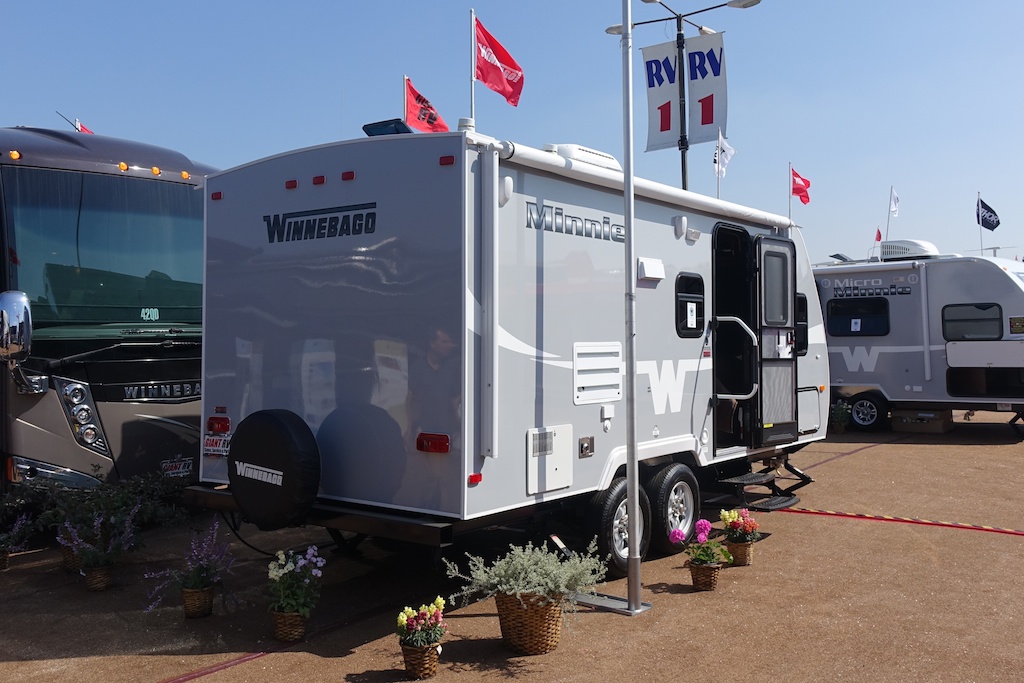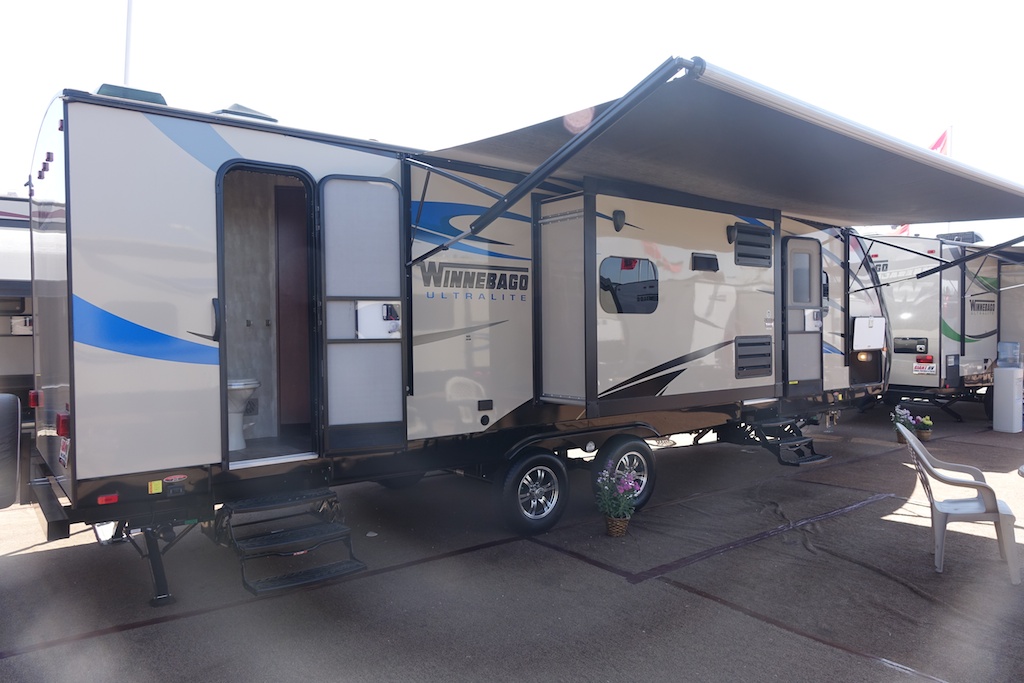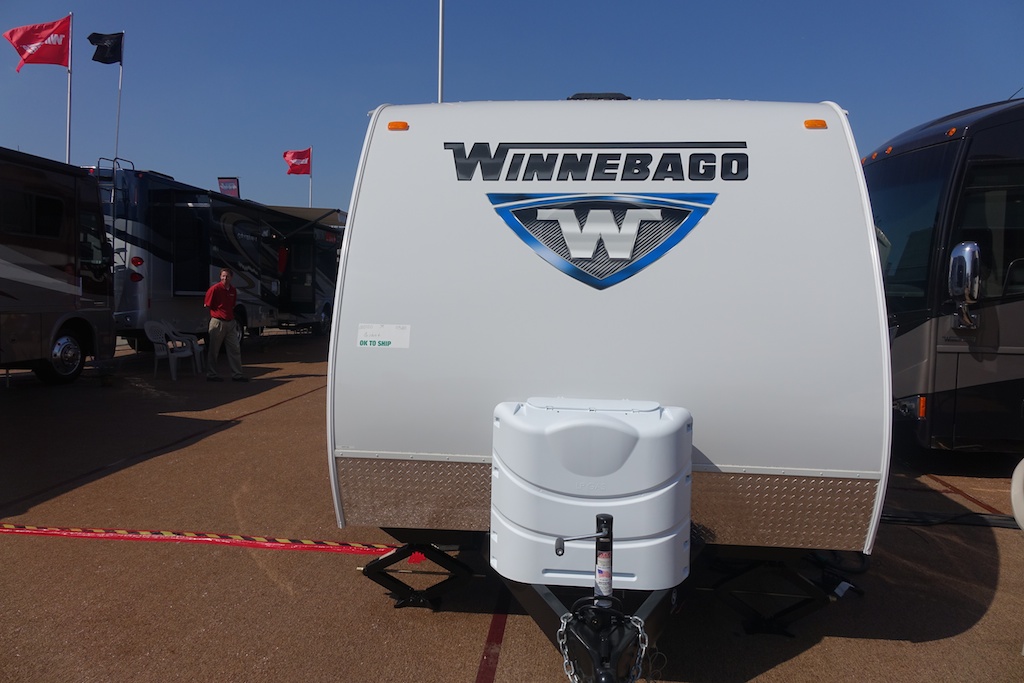
Leading from the Rear
When Jennifer Mink slammed her hand down onto the base of a drawer of a Winnebago Minnie Towable the report of the impact reverberated through the unit and I was startled by the aggressiveness of her demonstration.
Sure enough, the bottom of the drawer held fast and, encouraging me to look more closely, Mink pointed to the residential quality construction of the drawer frame itself, all of which was mounted on fully extendable ball bearing glides. It was a small detail, but fully representational of the newest product line in the Winnebago family.
To "hammer" home the point, Mink shows me two "I's." The "I's" are samples she has the Winnebago Towables plant make for her. They're made out of cabinet wood with a top and bottom piece perpendicularly connected with a single center piece. She holds the top and the bottom of the "I" and torques forcefully. In a moment, it breaks apart in her hands. "Look," she says, "corrugated fasteners." She hands me another "I" and directs me to try the same thing. I twist it hard, but it holds fast. "You see," she smiles, "we use screws in all our joints for maximum stability."
It's a dramatic lesson that quickly begins to reset my understanding of towable products. At the sprawling RV show at the LA County Fairplex there are scores of trailers on display. And, like any prospective buyer, as you walk through one after the other, your evaluation is essentially skin deep as you are looking at floorplan design, finishes and fabrics. It's natural to be thinking about livability first. And it's easy to make the assumption that the build quality is pretty much the same between manufacturers, until you spend an hour touring non-Winnebago models with the passionate Ms. Mink.
To some extent towables and motorhomes share common house elements, but by the very nature of price and lifestyle are generally sold to two different markets. Without the additional engineering and mechanical cost found in a motorhome, a towable product is a significantly more affordable entry into RVing.
Coming out of the great recession, Winnebago Industries made a strategic choice to broaden their product offering and provide buyers with a wider price range of lifestyle and travel products. The company weighed the option of developing towable products from scratch or acquiring an existing manufacturer and, in 2010, purchased the Sunnybrook company in Indiana. The goal was to take a well regarded, but struggling company and, over time, bring the same value and quality to towables that's found in their motorized products.
Four years later the Sunnybrook name as been retired, and the Winnebago logo is prominently displayed on a wide selection of models. However, this hasn't been a simple swap out of decals. Today's Winnebago Towable products reflect the company's core commitment to high quality construction.
After getting a top-to-bottom tour of a Winnebago Minnie from Jennifer Mink, we walk up a corridor of competing brands and step inside one. Dollar for dollar (MSRP), the particular unit Mink has selected is similar in size, features and layout as the Minnie, but costs about $3,000 dollars less. So what's the difference in the lower price? Mink walks me through a list of inferiorities: outside fiberglass that will fade quickly in the sun, partially finished interior panels leaving plumbing too exposed, a spongy floor that gives while walking, a frameless door to the bathroom with large gaps at the top and bottom, staples through the molding trim that are barely plugged with filler, and of course, a cabinet bottom that, with the slightest push, gives way.
And it's not like Mink had been picking on one product, I find these same deficiencies in other brands that I step into as I spend the afternoon touring the show. And while my morning survey of towable products had me thinking just about the superficial features of units, my post-Jennifer return visit to some products now reveals them in a much less favorable light.
Like their motorhomes, Winnebago Towables, generally cost a little more than some of their competitors. On the surface, while most towable products seem similar, the difference in quality (underneath the wallpaper and trim) is sometimes hard to see. This isn't and shouldn't be all about the lowest price. For whether you're spending less than $20,000 dollars or upwards of over $75,000 dollars, beyond floorplan features, the considerations of durability, usability and preservation of value should carry equal weight.
The Winnebago Towables line doesn't enjoy the same large market share as the motorhomes, but that's rapidly changing. The division is now profitable and, judging from the strong sales performance at the California RV show, the quality difference of the new product line is being recognized. Soon enough a lot more RVers will be looking through their rear view mirror and seeing a Winnebago logo smiling back at them in reverse.
Comments
Comments on this post are moderated, so they will not appear instantly. All relevant questions and helpful notes are welcome! If you have a service inquiry or question related to your RV, please reach out to the customer care team directly using the phone numbers or contact form on this page .
